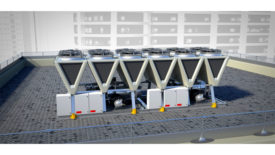Home » heat recovery
Articles Tagged with ''heat recovery''
A look at liquid cooling and heat reuse
Read More
Danfoss and Google enter into a strategic partnership on AI and energy efficiency
Danfoss will leverage generative AI with Google to transform customer experience and streamline internal processes
Read More
TODAY’S BOILER | JANUARY 2023
Can My HRSG Cope With a Hydrogen Blend?
While hydrogen does present challenges, they are within the capabilities of the vendor community.
Read More
Data Centers Are a Hot Market — Don’t Waste the Heat!
Data centers and high-performance computing centers always require cooling and constantly reject heat. When built as stand-alone facilities, this heat is rejected, and any opportunity to recover it is lost.
Read More
Case Study
Jasper® Engines Improves Employees’ Indoor Comfort with Toshiba Carrier VRF
September 16, 2021
Copyright ©2024. All Rights Reserved BNP Media.
Design, CMS, Hosting & Web Development :: ePublishing












